-

Erin Donahue -

Christina Barkanic -

Brittany Trott -

Emily Wiley -

Jessica Reilley -

Chris Raines -

Will Nichols -

Emily Reddy -

Michele Marchetti -

Michele Frank -

James Gherardi -

Kit Henshaw -

Christina and Erin -

Kim Tait -

Erin McKinney -

Steve Spanelli -

Sam Komlenic -

Katherine Taylor Grofic -

James Eisenstein -

Jamie Oberdick -

Anna Lombardo -

LacCreta Holland -

Tony Ricci -

Local Food Journey -

Laura Young -

Kristin Camplese -

Harrison's Fresh + Local -

Danielle Matalonis -

Kristine A. -

Linda Weaver -

Naomi Elle Schwartz -

Dana Stuchul -

Cara McShane -

Brittany Smith -

Jessica Illuzzi - Frosty
-

Jessica Paholsky -

James Sechrengost -

Brad Yeckley -

Maya Althouse -

Jordan Reabold -

Kim Chase -

Maria Bryant - Alexandrea Scott
A Market Dictionary
Posted by James Gherardi on 08/27, 2010 at 08:33 AM

Market. Photo Credit Emily Wiley.
Today we are faced with a laundry list of considerations when shopping at the market. Is this an organic apple? Does it come from a sustainable farm? Is this beef from grass-fed cattle, and are these eggs from free-range poultry?
In an attempt to simplify the elusive terminology of the farming world, we have created a what’s what of words and phrases to make your local eating experience a more informed one.
The following ten terms are the most important ones to consider when browsing markets and buying from local farmers.
Organic
Do not confuse organic with local. While many local farmers follow the guidelines of organic farming, some do not. The USDA mandates that in order for vendors to claim their food as organic, at least 95% of the ingredients must be organic – grown without synthetic pesticides, hormones, antibiotics, sewage-sludge fertilizer, bio-engineering, or genetically modified organisms.
Organic produce contains no added nutritional value, but it does eliminate the possibility of consuming harmful chemicals. The benefits of eating organic meat, however, are not as clear. For meat to be considered organic, the animal must never have ingested antibiotics or hormones, and its diet must have consisted of organic grain feed. But keep in mind that grain feed is not typical to the natural diet of cows and pigs. So when purchasing meat, it’s really best to skip the organic display and look for “grass-fed†instead – more on that later.
Certified Organic
Certified organic simply means that the ingredients used in the product were approved by the guidelines laid out by the USDA (as mentioned above). Only products that are certified 100% organic by the USDA may display the green and white USDA Organic seal on their packaging.
Fair Trade
Fair trade pertains just as much to politics as farming. TransFair USA is the organization that deems a product “Fair Trade Certified.†To be granted this label, a product must have earned its farmer or artisan a fair wage. Fair Trade farmers are guaranteed to have received at least five cents more per pound than the conventional market price and so end up earning three to five times more than conventional market farmers. Additionally, this certification guarantees no forced child labor or dangerous working conditions.
Sustainable Farming
Factory farms dominate the landscape of American agriculture, but it is only the sustainable farms that are helping to keep American soil fertile for future generations. Sustainable farming practices encourage a replenishment of the soil and minimal deforestation. This term roots itself in environmental policy, and recent legislation has mandated farms to limit the size of their practice and to minimize the degradation they inflict on their land.
All Natural
All Natural does not equal organic, and therefore does not need to be certified by a government agency. When a product label reads “All Natural,†it must also include an explanation – i.e. no preservatives, no artificial flavors, no added coloring. But check the list of ingredients! All Natural products may contain very unnatural ingredients – partially hydrogenated oil and high fructose corn syrup to name two. Unfortunately, manufacturers sometimes trick consumers into thinking a product is from the earth, when in reality, it’s mostly from a factory.
Grass-Fed
It’s best for all parties involved to eat meat and drink milk from grass-fed animals. This is what nature intended – next to hunting with a spear and gathering berries wearing nothing but a burlap sack. Grass-fed cows, pigs, and poultry consume what they were designed to consume, rather than grain feed created to boost productivity and lower costs. Many advocates for grass-fed meat and dairy products insist it is healthier and more nutritious than the feedlot counterparts (i.e. less saturated fat and cholesterol).
Free-Range
Chickens, ducks, hens, and other poultry labeled as free-range are free to gallivant through the farm. The USDA specifies that in order to be considered free-range, farmers must provide the animals with the option to leave their pens for more spacious accommodations. Free-range birds are not kept in 20x20-inch cages like some of their factory farm neighbors. They live happier lives and end up tasting better as a result.
The Dirty Dozen
The Environmental Working Group releases a list each year of the “dirtiest†fruits and vegetables in the market. These foods, when cleaned and prepared at home, still have the highest pesticide residue. They are often foods with edible skins, which you cannot peel. Here are the most recent culprits:
Celery
Peaches
Strawberries
Apples
Blueberries
Nectarines
Bell Peppers
Spinach
Kale
Cherries
Potatoes
Grapes
The best remedy to avoid the dirty dozen is to buy their organic equivalents.
CSA
Community Supported Agriculture initiatives are popping up in communities across the country. They are simply agreements between local farmers and community members. The farmer provides the consumer with fresh seasonal products, and the consumer promises to purchase the bounty on a regular basis. It’s a simple way for farmers to make money and for consumers to know exactly where their food is coming from.
Farmers Market
Farmers markets have become commonplace in recent years; most Americans can find one within a few miles of their home. Farmers markets bring together local farmers, butchers, bakers, florists, and artisans to sell their products to community members. Farmers markets provide a great way to generate revenue within your local economy. More often than not, products sold at farmers markets are fresher and tastier than what is available in your neighborhood supermarket. But note – unless you are at a “producer-only†farmers market, there’s a chance that the food you are buying was not grown locally. Occasionally, vendors visit auctions and buy fruits and vegetables to sell at their market stand. Many times this produce comes from neighboring states. Producer-only markets guarantee that the food being sold comes directly from the farmers on site.
Now strapped with a better understanding of farming phrases, it’s time to go out and conquer the world of food!
![]() Author: James Gherardi
Author: James Gherardi
Bio: James is a senior at Penn State majoring in broadcast journalism. He spent spring 2010 in Rome, and this past summer he worked for the NBC Washington Bureau in Washington, D.C.
- Our Local Food Journey comes to an end
- Winter isn’t a quiet time at the farm
- Get the taste of garden season right now by growing herbs indoors
- All you need to know about PASA’s Farming for the Future conference


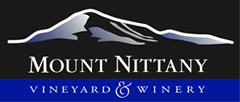
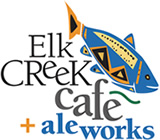
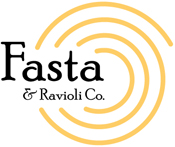

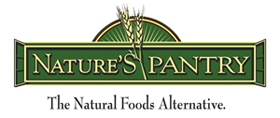
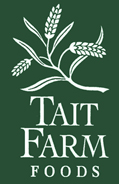

Comments
Posted by .(JavaScript must be enabled to view this email address)
08/27 at 03:14 PM
New York
Interesting blog! Thanks for defining these oft-touted terms!
Posted by .(JavaScript must be enabled to view this email address)
09/01 at 12:05 PM
Excellent blog, keep up the good work!
Posted by .(JavaScript must be enabled to view this email address)
09/02 at 02:02 PM
New York
Here’s to healthy good food!
Page 1 of 1 pages